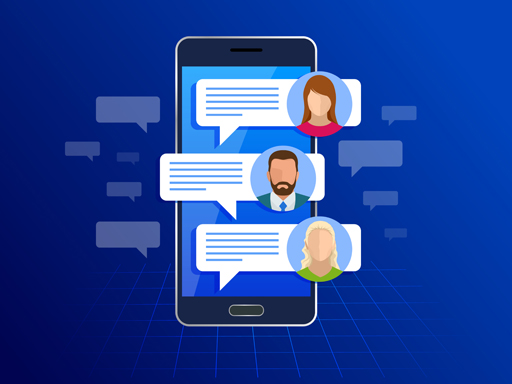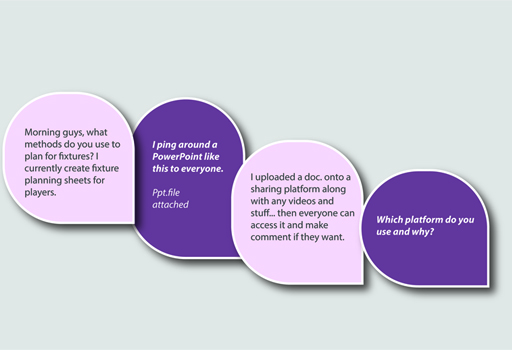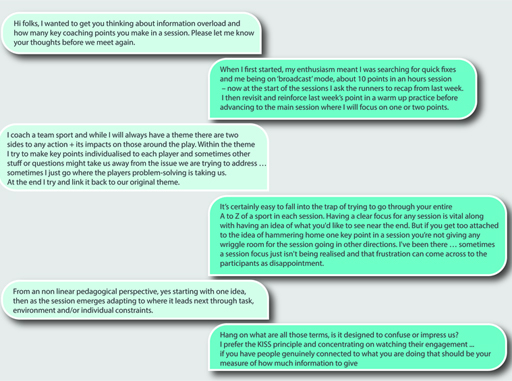2 The role of digital messaging
If communication, relationships and dialogue are an integral part of coach development then how does digital messaging, such as use of WhatsApp or other social media platforms, contribute if at all?

The following activity shows how the messaging platform WhatsApp is being used and asks for your opinion of its purpose and usefulness.
Activity 2 Coach learning and development via WhatsApp
Three different examples of messaging via WhatsApp in closed coaching groups are illustrated below. For each example review the conversation and think about:
- the purpose and value of this communication
- the extent to which you consider this plays a part in coach learning and development.


Discussion
Comments are made on each example.
- Example 1: In this case there is a small bit of reflection and then the dialogue turns to sharing online resources. Arguably this helps to create a type of shared learning community among the group. This might be called peer-to-peer coach development; the coach developer is not present, but it perhaps supports their learning and exposure to new resources.
- Example 2: In this case one proactive coach wants to check how their fixture planning compares with others in the group. Again peer-to-peer learning is evident as information is exchanged as different solutions to an issue are shared. The coaches’ perspectives of possible tools to use is certainly being broadened; this might stimulate further discussion when the group meets in the future. It is debatable whether any behaviour has been changed as a result, other than awareness of an alternative approach to solving an issue.
- Example 3: In this example a range of opinions are articulated with the different contexts and learning of each person in their varied sports sometimes making the online conversation discordant. Perhaps when common purpose, shared goals and coaching context are present this would be easier. There is also an example, toward the end, of one member starting to be slightly offensive to another. Perhaps if this type of group had clear ground rules and was set up with clear expectations it could have an impact on coach learning and development.
All three examples show the potential of digital messaging to promote learning and development, but it would be wrong to overplay its significance. One of the above examples showed online resources being shared. A challenge for coach developers is to get others to recognise that online material can hinder as much as help due to the limited validity of some ‘expert’ opinions. Coach developers may increasingly need to help recommend reliable content to those they work with. You will look at this next.

